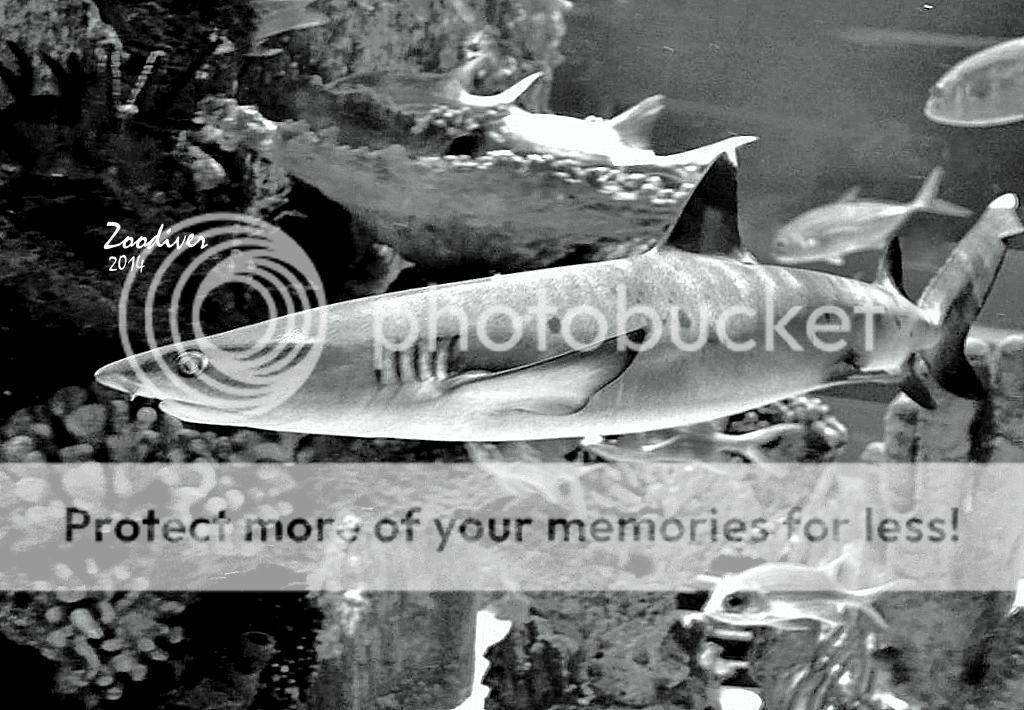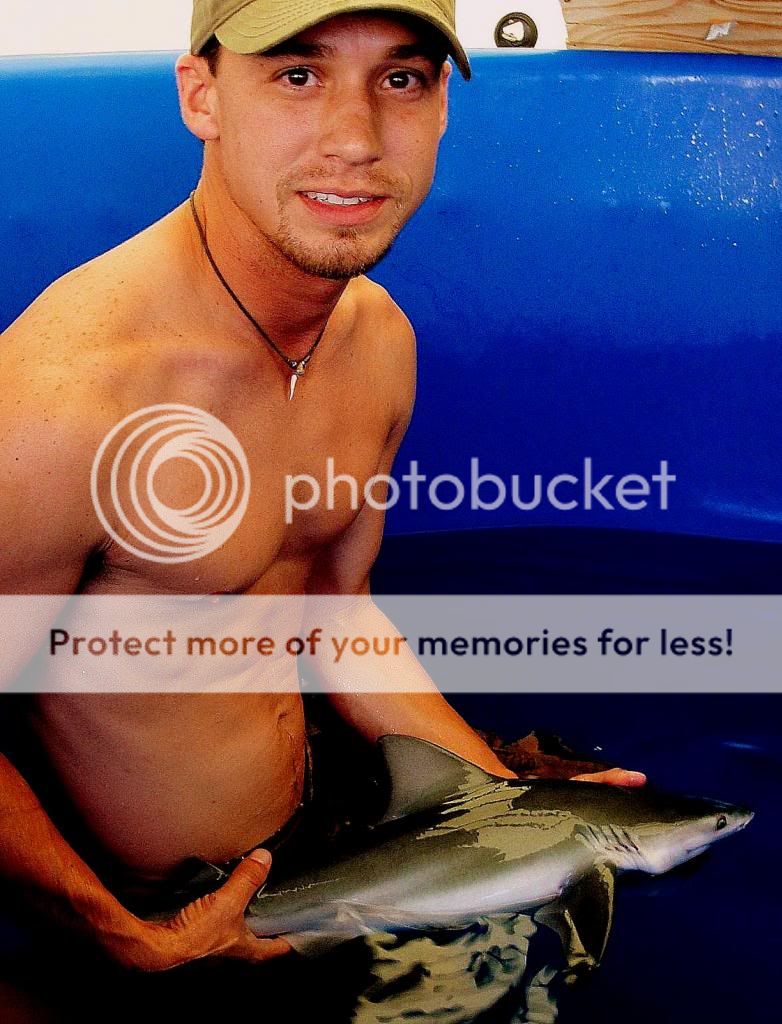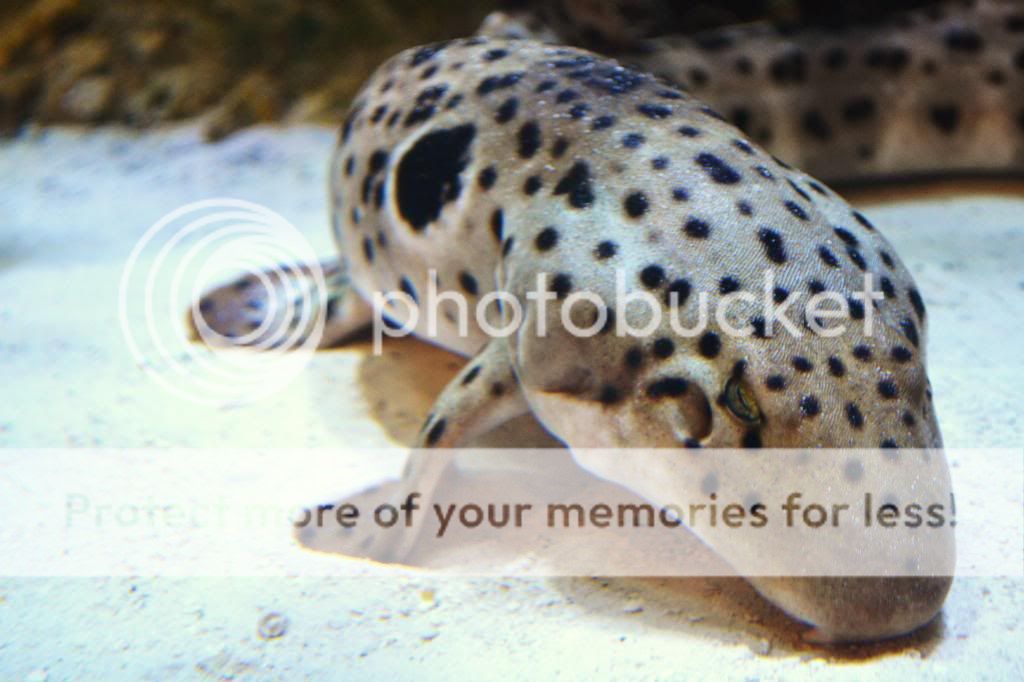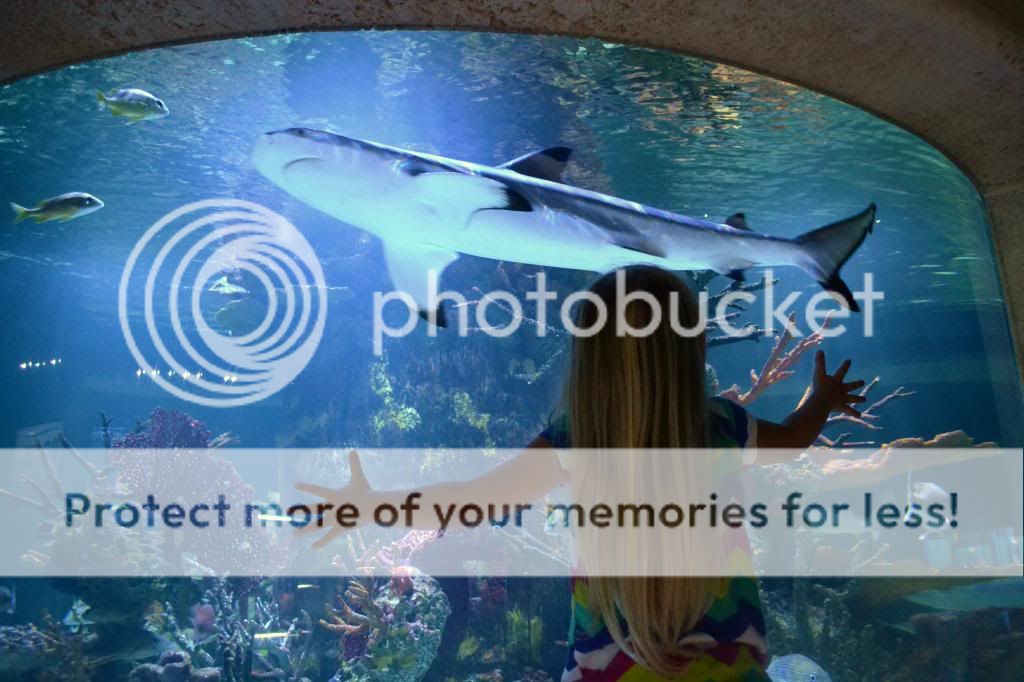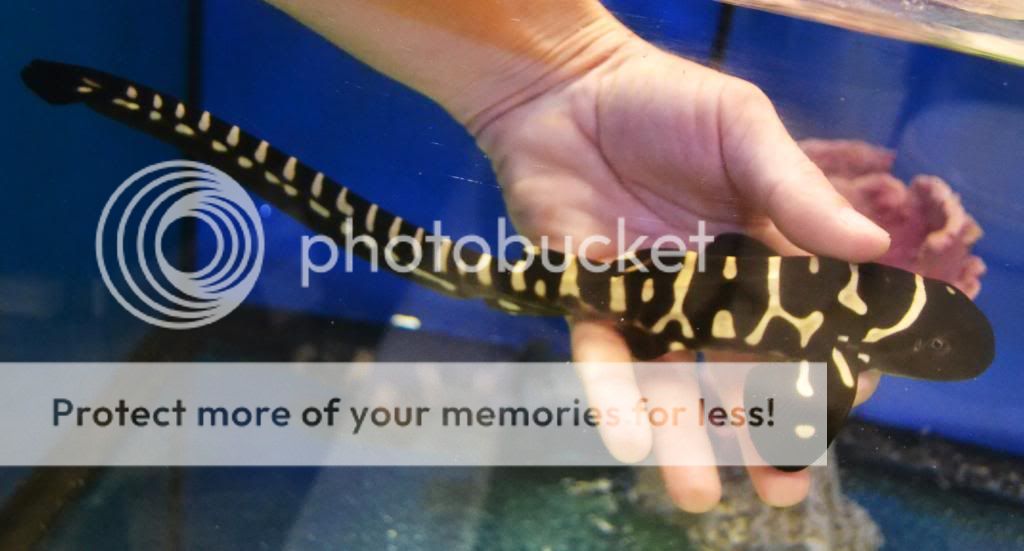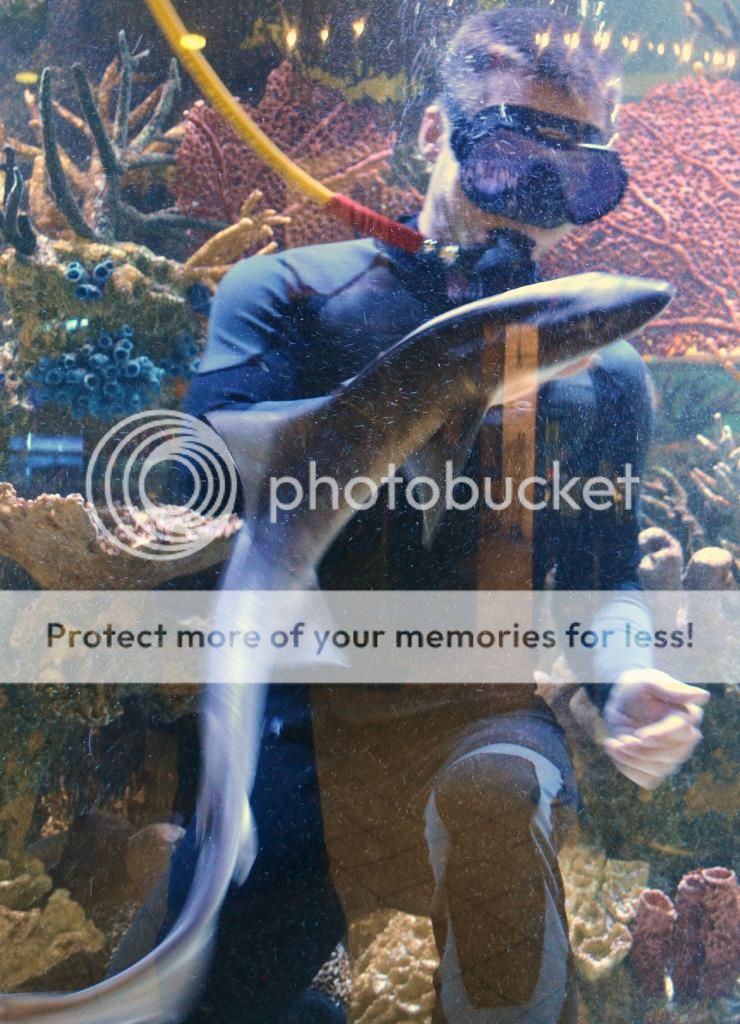First of all, I want to thank you guys for considering me for this honor. I feel like there are dozens of other members who would be more fitting for this.
My fish story is probably different than most in the hobby - mostly because it grew right out of the hobby. I started off keeping tanks at home in the early 80’s. I was a fish guy from day one. Nothing fancy to start with, and mostly fresh water. My first aquarium was a slate bottom glass tank held together with a metal frame filtered by an air stone inside a box of carbon. Growing up in the Midwest was not a great place to start a life working with fish, but I did what I could to gain experience. I started working with the North Dakota Game and Fish Department right out of high school. In college, I majored in wildlife biology (more diverse than the typical marine biology).
I knew I wanted to turn my hobby into my career. I was lucky enough to land an aquarist job at the Dallas World Aquarium and my career took off. The years of hands on experience I gained there has been invaluable to me. The ability to work directly under both the owner and a curator who had more combined knowledge than all of the books I had read allowed me to grow quickly. I left my home size tanks behind and traded up to displays that were hundreds of thousands of gallons. I was shown design, construction and modification of habitats. I learned permitting, collection and transport. But most importantly I learned the value of a solid routine to prevent problems from happening. Along with the freshwater and large marine displays, I was handed several 1500 reef displays to care for, that all featured very species designs to showcase different reef locations worldwide. Having a reef large enough you get in to clean it was probably a little like being thrown to the lions when it came to learning, but I made it out alive.
I took those skills and translated them to a major project at the Como Zoo in St. Paul, MN – helping them open an Amazon based rain forest exhibit. It was a major step to properly display fish for their guests. The zoo dates back to the late 1890’s, and it is still the only 100% free zoo to attend in the US.
When that project was up and running, I was asked to join the staff at what was then Underwater Adventures Aquarium (since has been sold and is now SeaLife Minnesota). Aside from the normal public aquarium type animals, it prided itself as the largest, most diverse collection of sharks/rays in North America (and possibly the world, but that was unconfirmed). As head of the animal husbandry department, I was put in a situation where my shark background was able to grow more as well as start teaching the next generation of aquarists. We specialized in keeping and breeding some of the rarest species of elasmobranchs on display. We had several non-releasable sea turtles and two of the largest freshwater fish displays in the country. I also met my wife there, and she is still in the industry with me.
From there we moved to South Florida, where I currently am doing consulting for several aquarium and aquatic animal facilities. I still like to specialize in the aquatic predators (sharks, crocs etc…), but I branch out when I can. Down here, I've done several big display renovations and I've helped create or expand several aquatic animal interaction displays at a few of the parks here in an effort to allow more people to fall in love with the animals I've had a passion for my entire life. One of my major projects here in South Florida was the complete redesign of an out dated shark exhibit for one of the largest fish stores in the country. It was turned into the most species of elasmobranchs on display South of Sea World Orlando – all free to walk in and see 7 days a week. I’m currently working on a couple of shark and stingray interaction programs for facilities in the Keys. I’m also working with up and coming aquaculture facility that has a goal of supplying more captive bred animals to the aquarium trade in an effort to reduce wild caught animals from the reefs.
You can tell my passion lies with sharing aquatic animals with the rest of the world, so people have a reason to want to save their wild counter parts. I’m also glad that there is a generation younger than me that have been able to take what I can show them and spread it all over the world. I love getting texts and emails from my old staff members who are all around the globe working with fish and conservation of our reefs.
Of course people like to know what I keep at home when my job includes so many large scale tanks and animals that weight hundreds if not thousands of pounds. I have had tanks on and off for the past several years. I do enjoy keeping sharks and rays at home when the need arises. I have had up to a 1,200 gallon pool running at home. Currently, the only tanks running at our house belong to our daughter. To be honest, many people are shocked I don’t keep tanks. But if you think about it, when you do something 60+ hours a week for work, it’s good to take a step away and enjoy the other parts of life. I do enjoy frequenting a couple of forums to help out with shark care (and anything else I might be able to talk about). The professional aquarium world and the hobby can be very different at times due to the goal of each, but many of the facts and technical end can be translated back and forth between the two groups. I know more than once, I've been on forums looking for input from guys who have very specialized experiences that have helped in finding solutions for situations I've been stuck in. Hopefully, I've been able to help a person or two with their home set up.
A few highlights from the past 15 years of work:
Example of one of the 1,500 gallon reef displays I ran at the Dallas World Aquarium.

Standing inside the 5,000 gallon shark display prior to installing the new artificial structure.

Outside the same tank a few weeks later.

Water work with an Epaulette shark.

Inside a display, with a 6 foot green moray eel.

Doing an x ray to locate a hook in the stomach of a nurse shark pup that had washed up almost dead on a beach in Miami.

As a 'shark expert' for National Geographic.

On a manatee rescue for Animal Planet several years ago.

And since I mentioned my wife and I are both in this industry, here we are hanging out with a few crocs.

My fish story is probably different than most in the hobby - mostly because it grew right out of the hobby. I started off keeping tanks at home in the early 80’s. I was a fish guy from day one. Nothing fancy to start with, and mostly fresh water. My first aquarium was a slate bottom glass tank held together with a metal frame filtered by an air stone inside a box of carbon. Growing up in the Midwest was not a great place to start a life working with fish, but I did what I could to gain experience. I started working with the North Dakota Game and Fish Department right out of high school. In college, I majored in wildlife biology (more diverse than the typical marine biology).
I knew I wanted to turn my hobby into my career. I was lucky enough to land an aquarist job at the Dallas World Aquarium and my career took off. The years of hands on experience I gained there has been invaluable to me. The ability to work directly under both the owner and a curator who had more combined knowledge than all of the books I had read allowed me to grow quickly. I left my home size tanks behind and traded up to displays that were hundreds of thousands of gallons. I was shown design, construction and modification of habitats. I learned permitting, collection and transport. But most importantly I learned the value of a solid routine to prevent problems from happening. Along with the freshwater and large marine displays, I was handed several 1500 reef displays to care for, that all featured very species designs to showcase different reef locations worldwide. Having a reef large enough you get in to clean it was probably a little like being thrown to the lions when it came to learning, but I made it out alive.
I took those skills and translated them to a major project at the Como Zoo in St. Paul, MN – helping them open an Amazon based rain forest exhibit. It was a major step to properly display fish for their guests. The zoo dates back to the late 1890’s, and it is still the only 100% free zoo to attend in the US.
When that project was up and running, I was asked to join the staff at what was then Underwater Adventures Aquarium (since has been sold and is now SeaLife Minnesota). Aside from the normal public aquarium type animals, it prided itself as the largest, most diverse collection of sharks/rays in North America (and possibly the world, but that was unconfirmed). As head of the animal husbandry department, I was put in a situation where my shark background was able to grow more as well as start teaching the next generation of aquarists. We specialized in keeping and breeding some of the rarest species of elasmobranchs on display. We had several non-releasable sea turtles and two of the largest freshwater fish displays in the country. I also met my wife there, and she is still in the industry with me.
From there we moved to South Florida, where I currently am doing consulting for several aquarium and aquatic animal facilities. I still like to specialize in the aquatic predators (sharks, crocs etc…), but I branch out when I can. Down here, I've done several big display renovations and I've helped create or expand several aquatic animal interaction displays at a few of the parks here in an effort to allow more people to fall in love with the animals I've had a passion for my entire life. One of my major projects here in South Florida was the complete redesign of an out dated shark exhibit for one of the largest fish stores in the country. It was turned into the most species of elasmobranchs on display South of Sea World Orlando – all free to walk in and see 7 days a week. I’m currently working on a couple of shark and stingray interaction programs for facilities in the Keys. I’m also working with up and coming aquaculture facility that has a goal of supplying more captive bred animals to the aquarium trade in an effort to reduce wild caught animals from the reefs.
You can tell my passion lies with sharing aquatic animals with the rest of the world, so people have a reason to want to save their wild counter parts. I’m also glad that there is a generation younger than me that have been able to take what I can show them and spread it all over the world. I love getting texts and emails from my old staff members who are all around the globe working with fish and conservation of our reefs.
Of course people like to know what I keep at home when my job includes so many large scale tanks and animals that weight hundreds if not thousands of pounds. I have had tanks on and off for the past several years. I do enjoy keeping sharks and rays at home when the need arises. I have had up to a 1,200 gallon pool running at home. Currently, the only tanks running at our house belong to our daughter. To be honest, many people are shocked I don’t keep tanks. But if you think about it, when you do something 60+ hours a week for work, it’s good to take a step away and enjoy the other parts of life. I do enjoy frequenting a couple of forums to help out with shark care (and anything else I might be able to talk about). The professional aquarium world and the hobby can be very different at times due to the goal of each, but many of the facts and technical end can be translated back and forth between the two groups. I know more than once, I've been on forums looking for input from guys who have very specialized experiences that have helped in finding solutions for situations I've been stuck in. Hopefully, I've been able to help a person or two with their home set up.
A few highlights from the past 15 years of work:
Example of one of the 1,500 gallon reef displays I ran at the Dallas World Aquarium.

Standing inside the 5,000 gallon shark display prior to installing the new artificial structure.

Outside the same tank a few weeks later.

Water work with an Epaulette shark.

Inside a display, with a 6 foot green moray eel.

Doing an x ray to locate a hook in the stomach of a nurse shark pup that had washed up almost dead on a beach in Miami.

As a 'shark expert' for National Geographic.

On a manatee rescue for Animal Planet several years ago.

And since I mentioned my wife and I are both in this industry, here we are hanging out with a few crocs.

Last edited:

